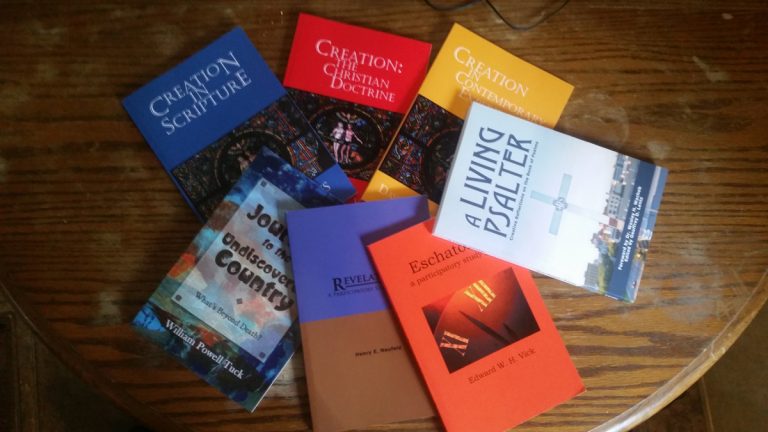Criticism Example: The Parable of the Sower
The following chart is designed to allow persons who are not skilled in Greek to work with the parallel accounts of the parable of the sower, Matthew 13:1-9, Mark 4:1-9, and Luke 8:4-8. Notes cover very basic cocepts of textual criticism, form criticism, source criticism, and redaction criticism. In future entries I will expand on these issues and also discuss literary, tradition, genre and canonical criticism.
As background, consult my pamphlet What is Biblical Criticism? which provides an extremely basic overview of the method. To that discussion, I need to add that not every portion of the general history of a document takes place with each document. For example, in the case of one of Paul’s letters, for example, there is no oral stage. In general, there are no sources, or sources provide only a very limited portion of the text. There are also no further redactions or editions of the text. Paul writes or dictates the letter, and then it is delivered. In this case form, source, and redaction criticism have very little to say. Sometimes scholars try to make use of these techniques on literature to which they are not well suited, and the results are not terribly helpful.
If we limit ourselves to the limits of this single pericope (or short, defined scriptural passage), then most of our questions relate to form criticism. We are asking what the form of the parable is. A good way to think of this is to ask yourself what it was about this that told you it was a parable. In this case, it is labeled “parable.” But what if you just heard the starting point: “A sower went out to sow.” Would you still recognize it as a parable? Did Jesus very likely say, “I’m going to use a parable now?” So the phrase that introduces the parable, as well as the setting is part of the redaction, or a result of editing the text.
To deal with sources we would have to look at more text. Within this parable, we can ask whether it is more likely that Mark was first, and Matthew and Luke copied from him, or was Matthew first? It would be a rather odd view these days, but logically one must consider whether Luke was first, and the others copied him. But in the passage in question, we see very little indication of who copied whom. Mark’s vocabulary and style is a little simpler, and Luke’s is more complex, but those changes could be made by any of the three.
There’s a likely reason for this. On the assumption that Mark is first (which I might argue with, but I want to work with the consensus for right now), this parable is probably part of the ‘Q’ source. (Q is an abbreviation for German “Quelle” which means “source.”) This parable is also repeated in the Gospel of Thomas, verse 9, which provides support for the possibility that it was part of a sayings source. Note also that Thomas does not include either the setting (one would expect it not to) nor does it include the final “He who has ears, let him hear.”
One major benefit of this sort of study is that it forces you to look in detail at every word and ask precisely how it fits into the intent of the author. Whether you agree with the work of any critical or scholar or not, that study cannot help but benefit you.
The Parable of the Sower |
|||
|---|---|---|---|
| Matthew 13:1-9 | Mark 4:1-9 | Luke 8:4-8 | Notes |
| 1On that day, when Jesus had gone out of the house, he sat beside the sea,2and large crowds came together to him,so that he into a boat embarked to sit. And all the crowd stood on the shore. |
1And again he began to teach beside the sea,and a large crowd was coming to him,so that into a boat he embarked to sit on [in] the sea, and the whole crowd by the sea on the land were. |
4Now a large crowd gathering, and people from various towns came together to him, | Note that the setting of the story differs in Luke. One of the functions of form criticism is to find the boundaries of the orally transmitted unit. In the gospels, we are aided in this process by having the units embedded in three different documents that we can compare. In this case, Matthew and Mark place this parable in the context of Jesus teaching in a boat by the sea. Luke uses the same setting (Luke 5:1-3) but with different teaching.Redaction criticism then deals with the way in which the parable is used to express the theme of the particular book or document, while the individual differences in the story itself aid us in source criticism, as we ask the question of who, if anyone, copied from whom.In Matthew, compare verses 1 & 2 to verse 1 in Mark. There are manuscripts of Matthew and Mark that make them read alike in each of the cases. Why do we not accept the variants that make the two passages more similar? Besides the fact that they do not have the best text, scribes had a tendency to accommodate texts rather than differentiate them. See further discussion of textual criticism at my previous entry, Textual Criticism – Briefly. |
| 3And he spoke to them many things in parables saying, Look, one who sows went out to sow. 4And while he was sowing, some [of the seeds] fell by the path, and when the birds came they consumed them [the seeds]. |
2And he taught them in parables many things and said to them in his teaching,3Listen! Look! Went out one who sows to sow.4And it happened in the sowing that some [seed] fell beside the path,and came the birds and ate it. |
he said by means of a parable, 5“Went out one who sows to sow his seed. Some feel beside the path and was trampled, and the birds of heaven ate it. |
Now we get to the start of the parable. Just like “once upon a time” at the start of a children’s story “he spoke a parable” or something very similar begins the actual parable. There are frequent textual variants that accommodate the various passages. |
| 5But some, fell on the rocky grounds, where they did not have much dirt, and immediately sprouted leaves because they didn’t have deep dirt. 6But after the sun rose, they were scorched and because they did not have root, they withered. 7But some others fell among the thorns, and when the thorns grew up they choked them. |
5and other [seed] fell on the rocky where it did not have much dirt, and immediately it sprouted because it didn’t have deep dirt. 6And when the sun rose, it was scorched, and because it didn’t have root, it withered. 7And other [seed] fell in the thorns, and the thorns grew up and choked it, and fruit it didn’t bear. |
6and other [seed] fell on the rock, and when it grew, it withered, because it didn’t have moisture. 7And other [seed] fell among the thorns, and the thorns grew together and choked it. | Note that Luke has the shortest version and that there are minor grammatical differences between all three stories. These differences are to be expected in orally transmitted material. |
| 8But others fell on the good ground and bore fruit, some a hundredfold, some sixtyfold, and others thirtyfold. 9Let the one who has ears hear. |
8And other [seeds] fell into the good ground, and it gave fruit when it grew up, and got larger and bore one thirtyfold, and one sixtyfold, and one a hundredfold.9And he said, whoever has ears to hear, let him hear. | 8And other [seed] fell into the good ground and when it grew it produced fruit a hundredfold.Having said these things, he called out: “Let the one who has ears to hear, hear!” | All three parables end with the command for those with ears to listen, though Matthew leaves out “to hear.”Note that I do not include the interpretation of the parable as part of the unit. The parable itself is a unit used in teaching, and Jesus did not include the explanation in the original statement for it. In the gospels, the explanation is given very shortly afterward to the disciples. Many scholars believe that these longer explanations are the product of the early church, and were not part of the explicit teaching of Jesus. |
In future entries I will discuss the methods further and also bring examples from other texts, then eventually take a look at Isaiah 24-27 as a passage that can benefit from the work of form, source, redaction, and canonical criticism.


